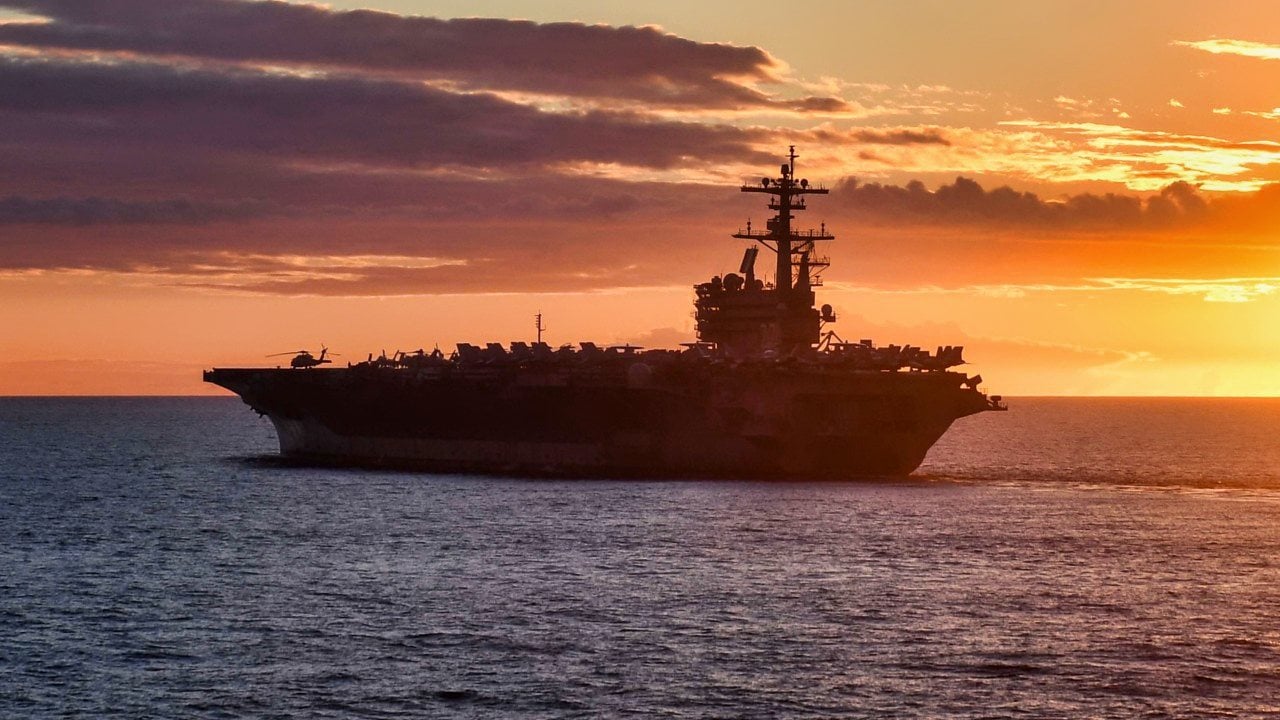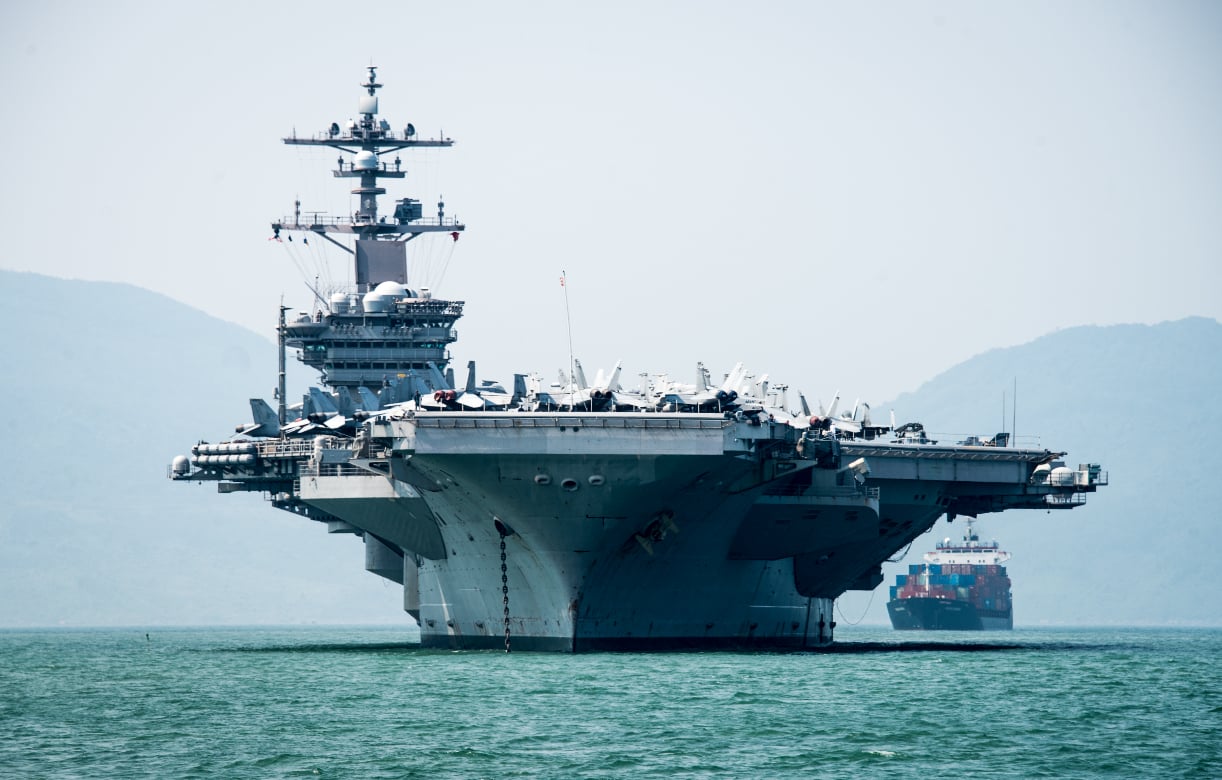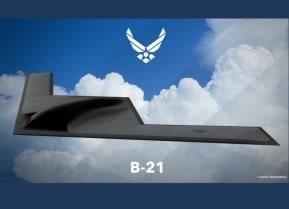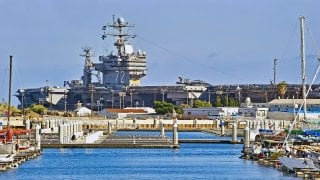Why Navy Aircraft Carriers Are Headed 'Straight to the Bottom' in a China War
As China's anti-access/area-denial (A2/AD) capabilities grow, the U.S. Navy's aircraft carriers face unprecedented threats from advanced anti-ship and hypersonic missiles.
Summary and Key Points: As China's anti-access/area-denial (A2/AD) capabilities grow, the U.S. Navy's aircraft carriers face unprecedented threats from advanced anti-ship and hypersonic missiles.

-Historically, carriers have been the cornerstone of U.S. naval dominance, but China's sophisticated defensive systems challenge their effectiveness.
-To mitigate these threats, U.S. carriers must stay clear of contested zones and undergo modifications to enhance their survivability.
-These changes should include integrating longer-range weapons and advanced drones, allowing for power projection without putting the carriers in direct danger.
-Without these adaptations, U.S. aircraft carriers risk becoming strategic liabilities in any future conflict with China over Taiwan.
Adapting U.S. Aircraft Carriers to Survive China's Anti-Ship Missile Threat
The advent of the aircraft carrier during the Second World War was one of the most significant events in the annals of modern warfare. A floating airbase that could be moved close to enemy positions, or wage naval combat at great distances, as occurred in the Pacific Theater of the Second World War, was revolutionary.
After the Second World War, the US Navy internalized the offensive strategic value of the aircraft carrier and made that system, rather than heavy cruisers or battleships, the lynchpin of their naval strategy. For 80 years, the American advantages in both aircraft carrier technology—and the strategic advantages these systems conferred upon the US Navy—made it the hegemon of the high seas.
Not even the mighty Soviet Navy could compete with the Americans in this arena.
But 80 years is a long time to depend upon a weapon system—even one as complex and massive as an aircraft carrier.

Eventually, a challenger will arise who seeks to defeat the American power by creating strategies to defeat some of its most potent weapons. The Chinese have led the way in building a sophisticated arsenal of relatively cheap (compared to the cost of US aircraft carriers) antiship missile and advanced hypersonic weapons that negate many (if not all) of the advantages that aircraft carriers once conferred upon the US military.
China Leads the Way in Challenging US Aircraft Carriers
In the last decade, the world’s militaries have shifted their focus from developing offensive means to exert their will upon the world to creating ingenious defensive methods to prevent the world’s sole remaining superpower from meddling in what these rival states, such as China, view as their backyard.
The goal is to draw the Americans into a fight near China, where they have established these sophisticated A2/AD “bubbles” meant to deny America access to these regions, while also threatening the survival of key American weapons platforms, like the expensive aircraft carriers.
Sure, US aircraft carriers have a coterie of self-defense capabilities primed at preventing antiship missiles from sinking them or damaging their important flight decks. And US carriers are usually protected by a battle group consisting of submarines, destroyers, and other ships capable of adding to the protection of these carriers.
Yet, for years China has laid the groundwork for building out defensive systems specifically aimed at destroying US aircraft carriers. For example, China leads the Americans (and the Russians, technically, lead both the Chinese and Americans) in the critical area of hypersonic weapons. Whatever defenses that US aircraft carriers and their attendant battle groups possess, the US military lacks the capabilities to defend itself against hypersonic missile attacks.
What’s more, as Bill Gertz reported in his 2006 book, Enemies: How America’s Foes Steal Our Vital Secrets—and How We Let It Happen, in the 1990s, Chinese spies stole the classified plans for how the Navy trains its sailors to keep its warships afloat, even after having been hit with enemy weapons.
The reason this development is important for understanding China’s threat to our warships—especially the aircraft carrier—is because Chinese war planners have had decades to develop weapons and tactics for hitting US warships in such a way that their crews would be unable to save their stricken ships.
Beijing is prepared to decimate the US carrier fleet while the US Navy’s carriers are not defended against the systems China (and its autocratic allies) have amassed to stunt the power of US aircraft carriers.
Keep US Carriers Away from A2/AD Bubbles
For now, US aircraft carriers need to be kept back from these hotspots. Because so much money has been spent on building and maintaining these war leviathans, they should still be used. But not for going after great state rivals, notably China, who have an A2/AD arsenal capable of ending the aircraft carrier threat to their forces.
Modifications should be made to the existing fleet of aircraft carriers to give them a real chance of being able to survive the flurry of Chinese antiship ballistic missiles and hypersonic weapons that will be lobbed their way if they come too close to what China considers their strategic area of interest.

American flattops and the ships belonging to their battle groups should be modified to carry longer-range weapons and drones that would allow for power projection into contested domains while mitigating the physical threat to those carriers.
Until these changes are made, the US aircraft carrier will be more of a strategic liability than an asset in any conflict (which is coming soon) with China over Taiwan.
About the Author
Brandon J. Weichert is a former Congressional staffer and geopolitical analyst who is a contributor at The Washington Times, as well as at American Greatness and the Asia Times. He is the author of Winning Space: How America Remains a Superpower (Republic Book Publishers), Biohacked: China’s Race to Control Life, and The Shadow War: Iran’s Quest for Supremacy. Weichert can be followed via Twitter @WeTheBrandon.
All images are Creative Commons and/or Shutterstock.


